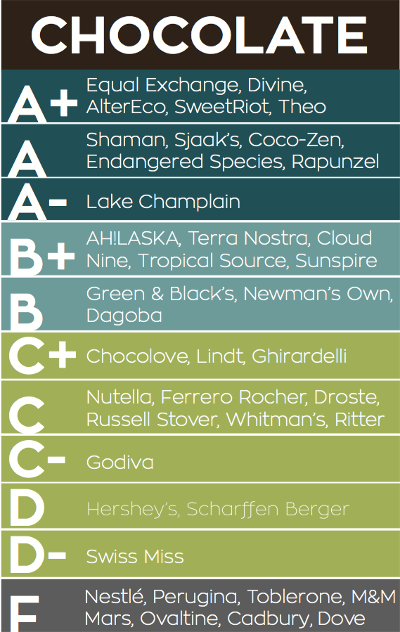
1.8 MILLION
>5%
>$2
10,000
30%
2 “Women and the Big Business of Chocolate,” Oxfam.
3 US Department of State.
THE TAKEAWAY

The availability of organic, fair trade, and ethically sourced chocolate is exploding. While you still may have to look a little harder, you should be able to find alternatives to your favorite chocolate-based snacks that will allow you to feel good about what you’re purchasing and make a significant difference for others. Your best bet is to avoid most of the large chocolate producers as their records around both social and environmental issues remain troubling.
For more information on companies, brands, and how they rank based on the latest data we have available, visit www.betterworldshopper.org, download the Better World Shopper app for iPhones, or pick up a copy of The Better World Shopping Guide (4th edition) at your local independent bookstore.





